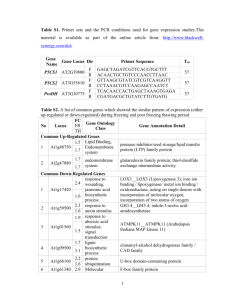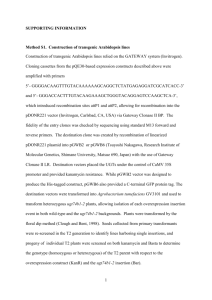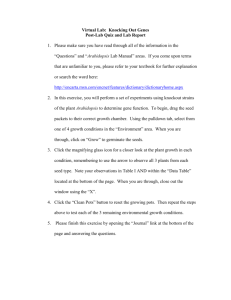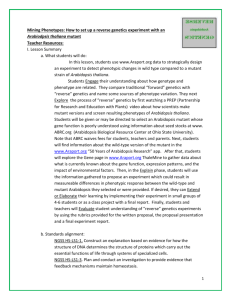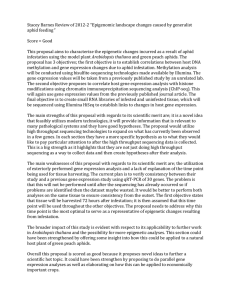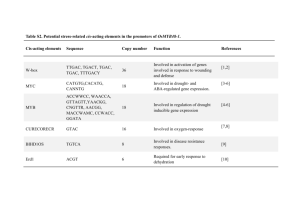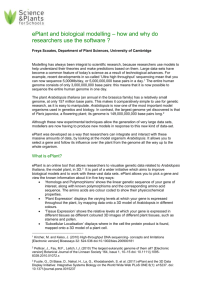Student handout
advertisement
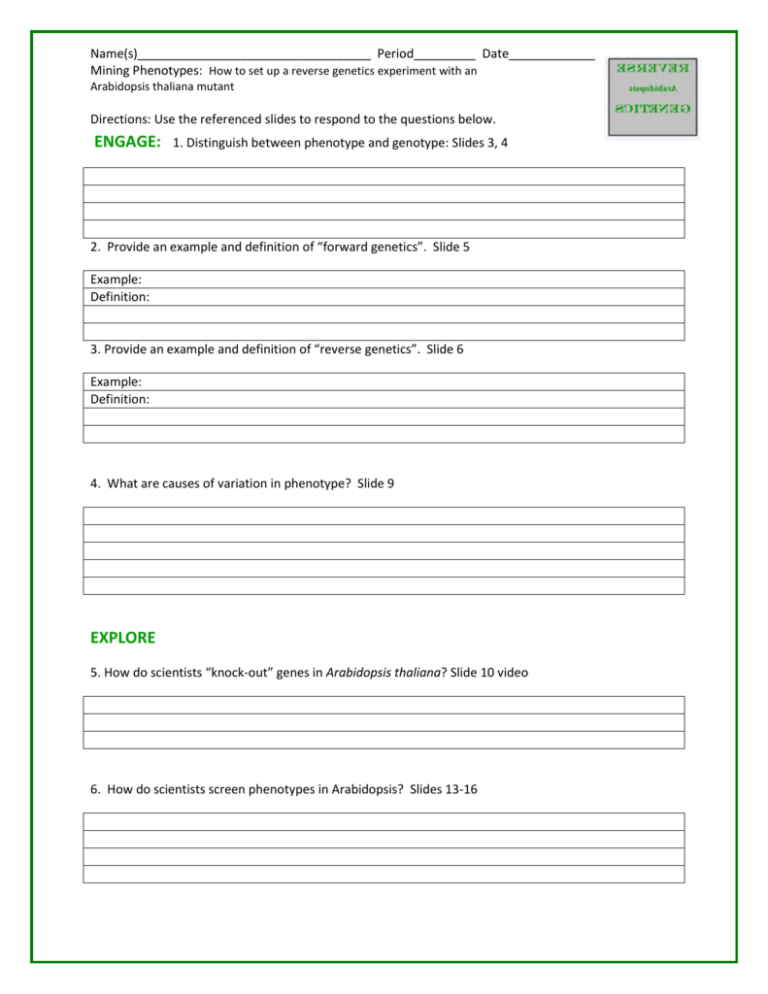
Name(s)__________________________________ Period_________ Date________________________ Mining Phenotypes: How to set up a reverse genetics experiment with an Arabidopsis thaliana mutant Directions: Use the referenced slides to respond to the questions below. ENGAGE: 1. Distinguish between phenotype and genotype: Slides 3, 4 2. Provide an example and definition of “forward genetics”. Slide 5 Example: Definition: 3. Provide an example and definition of “reverse genetics”. Slide 6 Example: Definition: 4. What are causes of variation in phenotype? Slide 9 EXPLORE 5. How do scientists “knock-out” genes in Arabidopsis thaliana? Slide 10 video 6. How do scientists screen phenotypes in Arabidopsis? Slides 13-16 Name(s)__________________________________ Period_________ Date________________________ Mining Phenotypes: How to set up a reverse genetics experiment with an Arabidopsis thaliana mutant 7. What is a strategy scientists use to elicit phenotypic changes? Slide 17 video. 8. List 3 of the titles you found on the Araport app “50 years of Arabidopsis research” which are related to a potential Arabidopsis gene mutation-phenotype experiment you might conduct. Slides 19-21 9. What sorts of information could you find in ThaleMine about your gene of interest? Slide 23 10. What might the gene product (protein) do? Record GO (gene ontology) terms provided on the gene page. Slide 25 11. The Gene page usually provides publications. Do any of these measure something about what the gene or gene product does? If so, include those method names (example: Protein gel electrophoresis) 12. What is gene expression? Slides 28-29 13. What molecules in the cell do scientists quantify when measuring gene expression? Slide 29 Name(s)__________________________________ Period_________ Date________________________ Mining Phenotypes: How to set up a reverse genetics experiment with an Arabidopsis thaliana mutant 14. What methods do scientists use to measure gene expression? Slides 31-33 15. What does the Tissue Specific Expression information say about where in the plant the gene of interest is expressed? Slide 34 13. What does the “Developmental map” tell you about when in the plant’s life cycle the gene is expressed? How many days after planting might that part of the life cycle occur? Slide 35-36 14. What environmental factors affect expression of your gene of interest? What amounts were provided (concentrations of solutions, for example)? Slide 37 EXPLAIN Use the information you gathered to propose an experiment which might result in measurable differences in response between wild type and mutant Arabidopsis. Describe the proposed treatment in detail. Slide 38 Question: What is the proposed treatment (in detail) and why? How might the mutant plant respond compared to the wild type plant? Explain your thinking. How could you measure the response? With what instrument or method? Your idea: Name(s)__________________________________ Period_________ Date________________________ Mining Phenotypes: How to set up a reverse genetics experiment with an Arabidopsis thaliana mutant What part of the plant is likely to show a response? How many days after planting will pass until you see an effect? Provide your rationale. How often will you need to take measurements? Provide your rationale. EXTEND/ELABORATE Obtain wild-type and mutant version of Arabidopsis thaliana seeds from www.ABRC.org , the Partnership for Research and Education with Plants, or other provider to conduct your proposed experiment. The experiment may be conducted in small groups or as a class project. EVALUATE Rubrics are provided for the written proposal, the proposal presentation and a final experiment report.
